-
TrackoBit
Manage commercial vehicles with the new-age Fleet Management Software
TrackoBit -
TrackoField
Streamline your scattered workforce with Field Force Management Software
TrackoField -
Features Resources
-
Blog
Carefully curated articles to update you on industrial trends. -
White Paper
Insightful papers and analysis on essential subject matters. -
Glossary
Explore an alphabetical list of relevant industry terms. -
What’s New
Get TrackoBit & TrackoField monthly updates here. -
Case Study
Explore the cases we solved with our diverse solutions. -
Comparisons
Compare platforms, features, and pricing to find your best fit.
-
About Us
Get to know TrackoBit: our team, ethos, values, and vision. -
Careers
Join the most dynamic cult of coders, creatives and changemakers. -
Tech Support
Learn about our technical support team and services in detail. -
Events
Check out the exhibitions where we left our marks and conquered. -
Contact Us
Connect with us and let us know how we can be of service.
Attempted Delivery: What Does It Mean & What Happens Next?
- Author:Tithi Agarwal
- Read Time:7 min
- Published:
- Last Update: June 3, 2025
Table of Contents
Toggle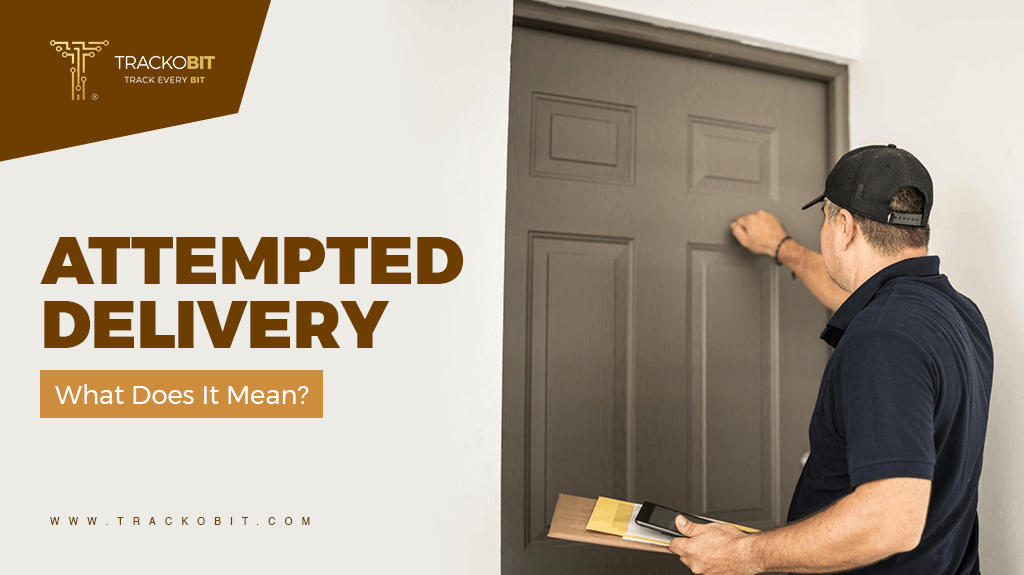
Successful first attempt delivery is essential for bolstering cost savings by minimising operational expenses and increasing customer satisfaction and loyalty.
Table of Contents
ToggleA whopping 8% of all first-time package deliveries fail. Sometimes, riders deliver parcels only to find the consumer absent. Left with no choice, they often leave the attempted delivery notice or place packages on the doorstep. Sadly, that often leads to stolen deliveries and packages.
These failed or unsuccessful deliveries affect customer satisfaction and cost companies time and money in re-attempting deliveries. This is why most last-mile delivery companies put immense effort into making the first attempt delivery successful.
In this article, we have discussed:
- What is attempted delivery?
- Reasons for failed delivery attempts
- What is first attempt delivery?
- How to calculate FADR?
- Reasons why first attempt delivery is important
- Tips to make first attempt delivery successful
Let’s get into it!
Read Blog – How to Streamline Delivery Management in 2023?
What Does Attempted Delivery Mean?
Attempted delivery is when a courier or delivery agent makes an effort to timely deliver a package to the designated recipient but fails to do so. It could happen mainly when the recipient is unavailable or unresponsive at the delivery address or there is some glitch in the shipment tracking software. It could even be due to the incomplete or wrong address input by the recipient.
So what happens when the recipient is not available or is unresponsive?
Occasionally, the delivery agent might notify consumers through the message of a failed attempt stating that they tried to deliver the item. An attempted delivery message might tell the recipient to call to schedule a different delivery time.
In most cases, the courier will either deliver the package to a nearby fulfilment centre or return it to the sender after an unsuccessful delivery attempt. The staff will hold it until the recipient can retrieve it. In some situations, the delivery service might bill extra for a second attempted delivery or keep the package at a location.
What Can Lead to a Failed Delivery Attempt?
The most common causes of failed delivery attempts include the following:
- Incorrect or Incomplete Address: An incorrect or inadequate address is among the most common causes of a failed delivery attempt. This could include typos in the pin code, city, state, or street name. The package won’t be delivered if the delivery person can’t locate the correct address.
- No One was Home to Receive the Package: The courier will notify of a delivery attempt was made, but the customer was not home to accept their package. In such event, delivery agents prefer to not leave the package at the doorstep to avoid the risk of theft and tampering.
- The Package was Too Large for the Delivery Location: The delivery person might be unable to deliver the package if it is too big to fit through the recipient’s front door or mailbox. In this instance, the customer might have to arrange for the package to be delivered to a different address or picked up at another specific location.
- Signature Required: Hazardous materials, fire arms, and prescription drugs are among the packages that might need a signature when delivered. If someone is unavailable to sign for the item, the courier cannot simply deliver it or leave it open at the delivery destination. In this instance, the customer needs to arrange for a later delivery or pickup of the package by following the directions in the attempted delivery notice.
- Bad Weather or Natural Disaster: Natural disasters or unfavourable weather can occasionally make delivery unsuccessful. For example, the courier might be unable to deliver packages safely during bad weather conditions. When that occurs, customers might have to hold off on receiving their deliveries until the weather improves.
By understanding the common causes of failed delivery attempts, consumers and couriers can take steps to prevent them from occurring. That is why the abovementioned factors are relevant.
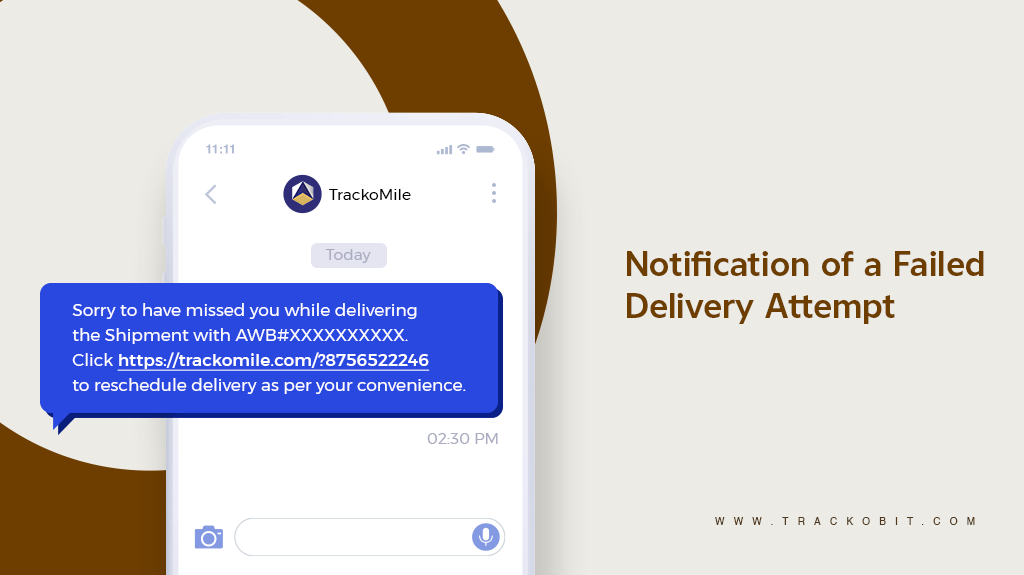
What is First Attempt Delivery?
First attempt delivery typically refers to the initial delivery attempt made by a shipping or courier company to deliver a package or parcel to its end consumer. This attempt is made based on the delivery schedule and information provided by the sender, such as the recipient’s address and any special instructions.
However, suppose the consumer cannot receive the package during this first attempt. In that case, the courier service will attempt redelivery later, depending on their policies and the specific circumstances.
Must Read: 6 Ways to Increase Delivery Speed
How to Calculate First Attempt Delivery Rate (FADR)?
First Attempt Delivery Rate (FADR) measures the percentage of shipments involve successful first delivery attempts that don’t require any follow-up delivery attempts or re-shipments. FADR helps to assess the efficiency and effectiveness of your logistics operation and identify where attempted deliveries are going wrong and why.
E-commerce businesses can calculate FADR with the following formula:
FADR = (Total deliveries – total failed first attempts) / total deliveries) × 100
A good First Attempt Delivery Rate is considered somewhere between 90%-100%. While an FADR of 100% is unrealistic due to gaps encountered from the end of both customers and shipping companies, e-commerce brands should be doing everything they can to keep the number of delivery attempts as low as possible.
Reasons Why First Attempt Delivery is Important?
Helps to Reduce Extra Costs
Successful first delivery attempts in retail can lower expenses related to delegating multiple delivery staff, storing packages, and resources needed to carry out multiple deliveries (for the same order).
The additional expenses incurred for a follow-up delivery amount to the same as the cost of three deliveries. That’s the biggest reason businesses engaged in e-commerce and third-party logistics must ensure successful deliveries on the first attempt only.
Re-attempted deliveries can lead to additional expenses such as rescheduling, notifying the customer, and adding the delivery to a later delivery round at a time that works for everyone.
Improves Customer Experience and Retention
As same or next-day deliveries become standard, customer satisfaction emerges as the key factor for retailers, with last-mile deliveries being pivotal. Enhancing the success rate of first delivery attempts benefits customers, delivery personnel, and service providers.
By optimising factors such as timely delivery within preferred time slots and offering real-time tracking updates, retailers can ensure a satisfying shopping journey for their customers. Swift last-mile delivery services that leave customers delighted play a crucial role in both attracting and retaining them.
Research suggests that unsuccessful first delivery attempts or delayed deliveries may prompt more than 15% of customers to discontinue shopping with a retailer. This highlights the importance of efficient delivery services in maintaining customer loyalty.
Increases Customer Loyalty, Engagement, and Spending
Customers are looking for quicker and more frequent deliveries as more and more are shopping online. Consequently, successful delivery in the last mile on the first attempt has become a crucial service-level requirement and a “must-have” feature, especially for customers who purchase groceries and food.
- Research shows that three-quarters of consumers are willing to spend more if they are satisfied with the delivery services.
- While 74% of satisfied consumers intend to increase purchase levels by 12% with their preferred retailer,
- 53% are willing to purchase a paid membership for delivery services.
So, offering faster last-mile delivery services to consumers brings the following benefits to retailers:
- Increased customer loyalty
- Increased customers’ willingness to pay higher delivery charges for quicker delivery
- Higher average monthly grocery spend by consumers
- Increase in purchase order size
- More cross-sell and up-sell opportunities for the retailer
- Higher chances to sell exclusive memberships to consumers
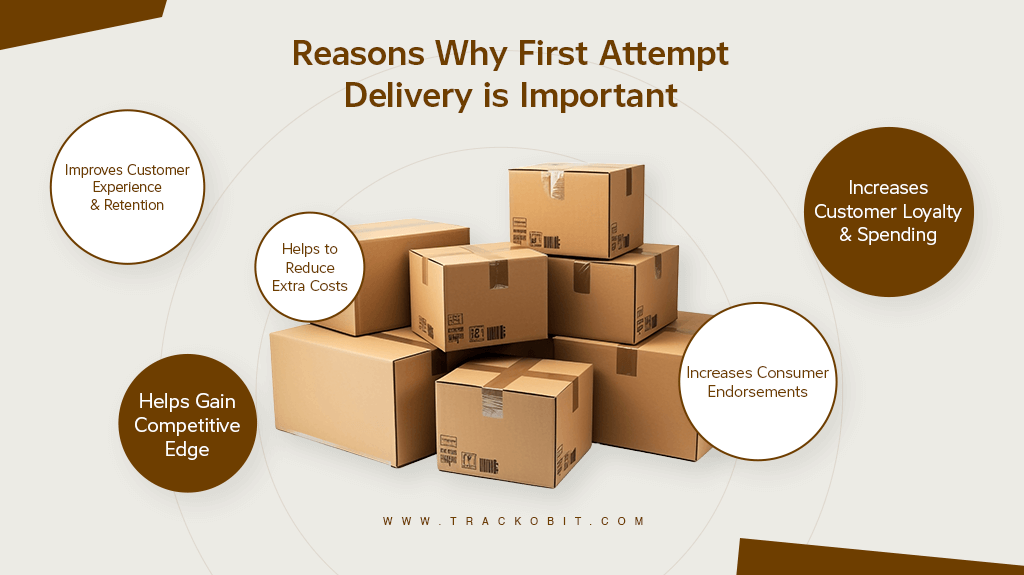
Increases Consumer Endorsements
Studies reveal that 82% of contented clients recommend their good delivery experiences to friends and family. Retailers benefit from this endorsement by gaining more customers.
An effective and prompt last-mile delivery service can boost a retailer’s free word-of-mouth referrals.
Helps Gain Competitive Edge
Organisations that offer a superior last-mile experience, including first-attempt deliveries, gain a competitive edge over their peers as consumer expectations rise and they gravitate towards faster delivery options.
How Can Last-Mile Delivery Software Help Ensure Successful First-Attempt Delivery?
An end-to-end last-mile delivery optimization software like TrackoMile can help increase the success rate of first delivery attempts by:
- Automating order processing and dispatching.
- Automating carrier and rider pairing for timely scheduling and dispatching vehicles with carrier management feature.
- Optimising routes to find the fastest and cost-saving delivery path. Offering real-time asset tracking, alerts, and notifications to both shippers and consumers improves end-to-end visibility and reduces the risk of first-attempt delivery failures.
- Sharing live tracking links to customers with timely updating ETAs.
- Allowing consumers to choose delivery time slots as per their preference or availability. Offering Electronic proof of delivery (EPOD) to receive proof of successful deliveries.
- Offering insights and analytics that help analyse and monitor delivery trends and improve delivery performance in the future.
- Offering rider app for allocating riders tasks as per their availability or proximity, collecting PODs, and ensuring their coordination with them in case of change in delivery plans.
Conclusion
Attempted deliveries can tarnish the relationship that a brand has with its customers. Moreover, they lead to issues like fuel wastage and chargebacks, negatively impacting a business’s bottom line.
Fortunately, TrackoMile can help you avoid attempted deliveries and associated problems. Our platform serves you as the best delivery management software with features designed to automate, simplify and optimise your dispatching and last mile delivery processes.
Frequently Asked Questions
-
How many times is delivery attempted?
Depending on the logistics service used, delivery attempts can be between two to three times.
-
What is first attempt delivery?
First-attempt delivery implies that the delivery was made on the first attempt.
-
What happens if you miss all delivery attempts?
Usually, the courier leaves a note with future delivery or pick-up plans. Other times, the package may be sent back to the sender.
Tithi Agarwal is an established content marketing specialist with years of experience in Telematics and the SaaS domain. With a strong background in literature and industrial expertise in technical wr... Read More
Related Blogs
-
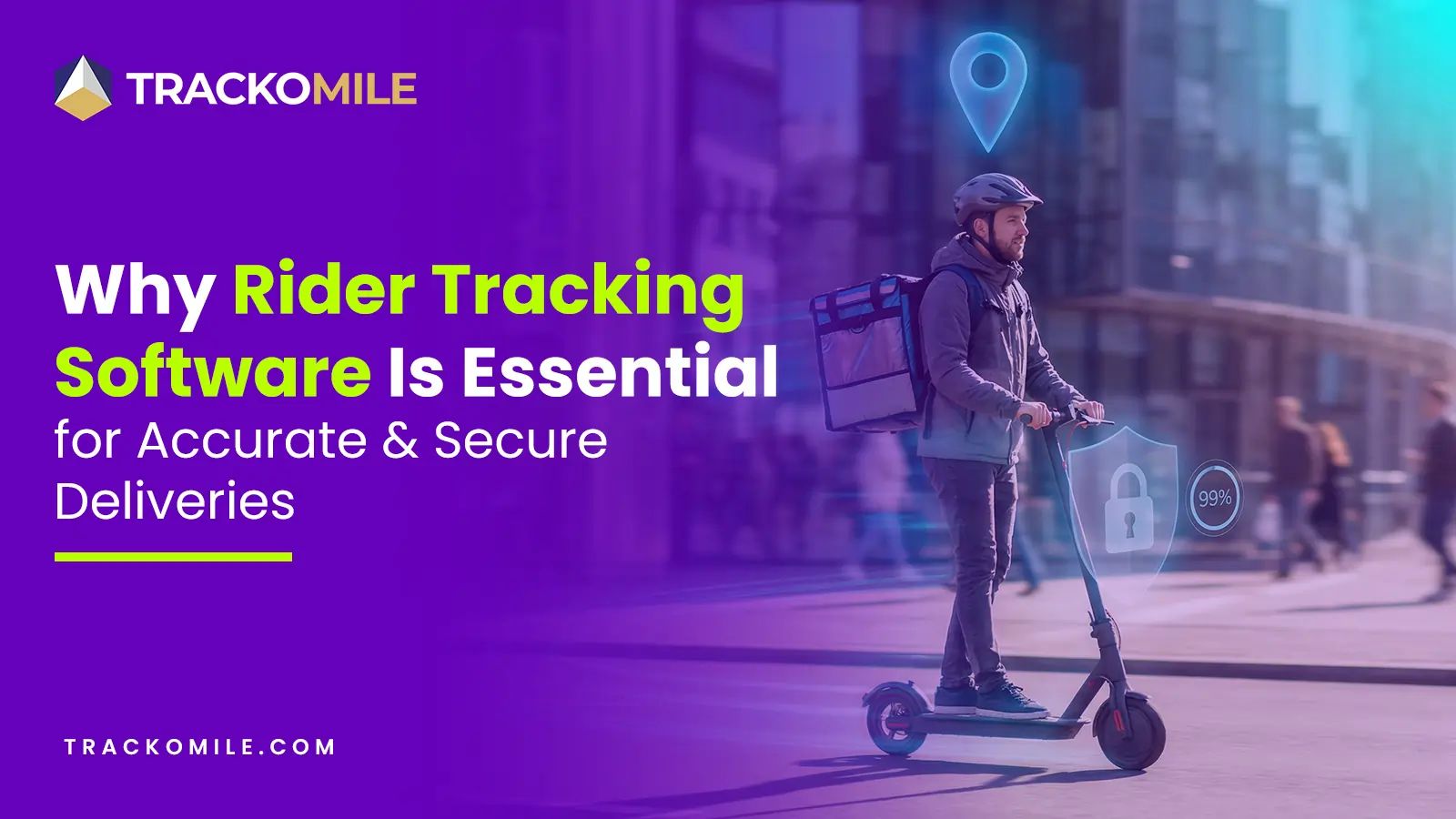
How Rider Tracking Software Improves Delivery Accuracy and Reduces Fraud
Tithi Agarwal December 8, 2025Rider tracking software improves delivery accuracy with real-time GPS visibility and automated ePOD. It also enables route optimisation and fraud…
-
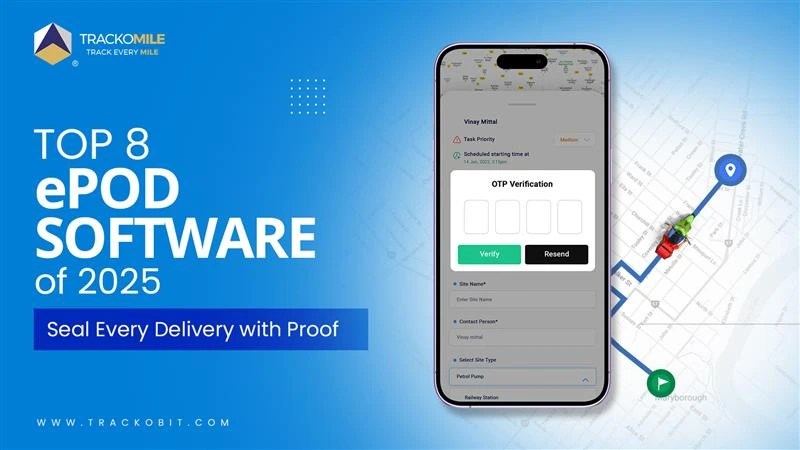
Top Electronic Proof of Delivery (ePOD) Software in 2026
Tithi Agarwal September 25, 2025Electronic proof of delivery has become the backbone of modern logistics. Explore the top 8 ePOD software in 2025 and…
-
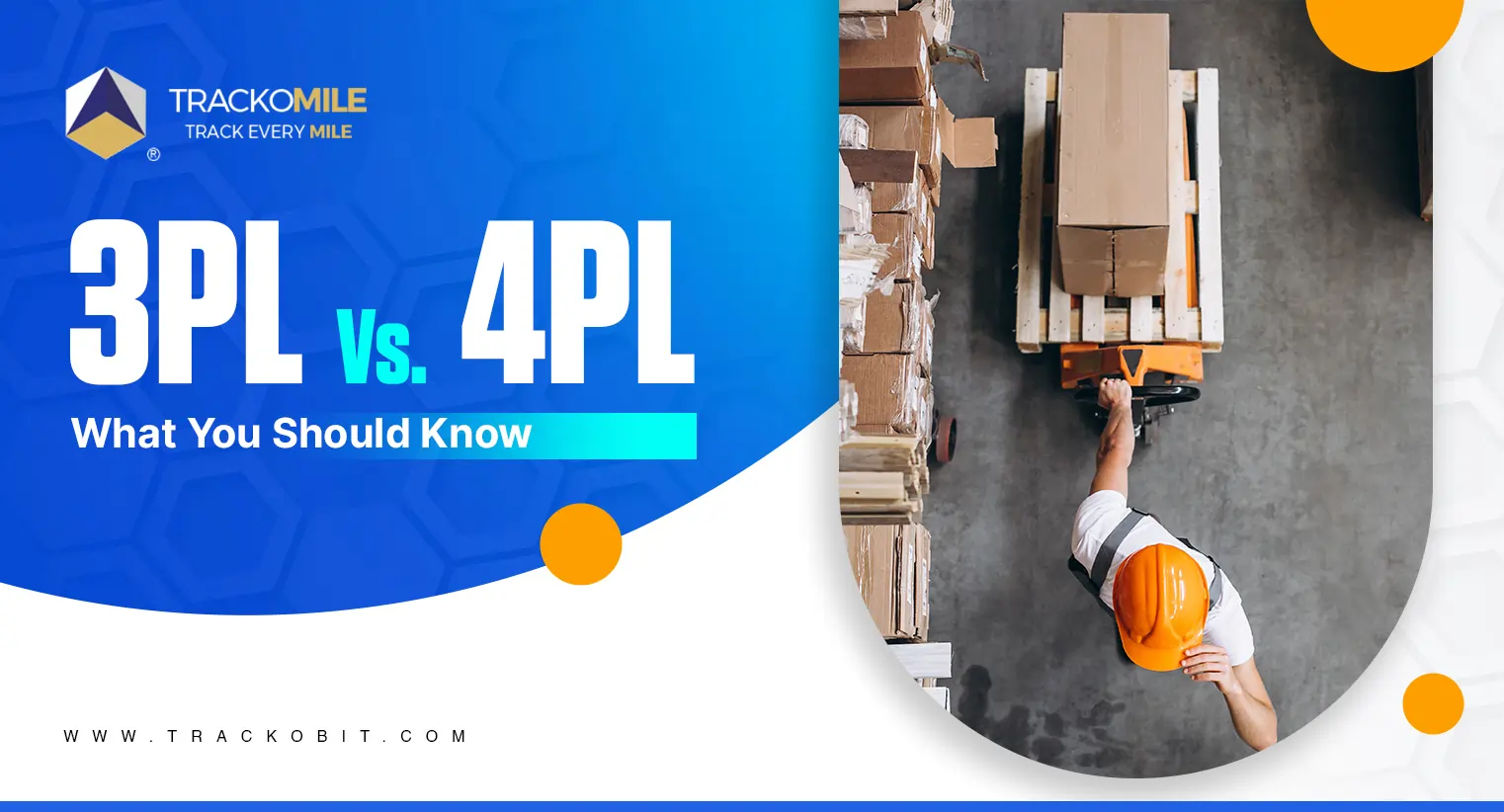
3PL vs. 4PL: Which is Best for Your Business?
Tithi Agarwal September 25, 2024Confused about choosing between 3PL and 4PL for your retail supply chain? Read this blog to find out which is…
-

What is Payload Capacity? Payload Capacity Vs. Towing Capacity
Tithi Agarwal September 10, 2024Payload capacity is the total weight a vehicle can safely carry, and it is crucial for safety and compliance. Exceeding…

Subscribe for weekly tips to supercharge your last-mile delivery.
Your inbox awaits a welcome email. Stay tuned for the latest blog updates & expert insights.
"While you're here, dive into some more reads or grab quick bites from our social platforms!"Stay Updated on tech, telematics and mobility. Don't miss out on the latest in the industry.
We use cookies to enhance and personalize your browsing experience. By continuing to use our website, you agree to our Privacy Policy.



































